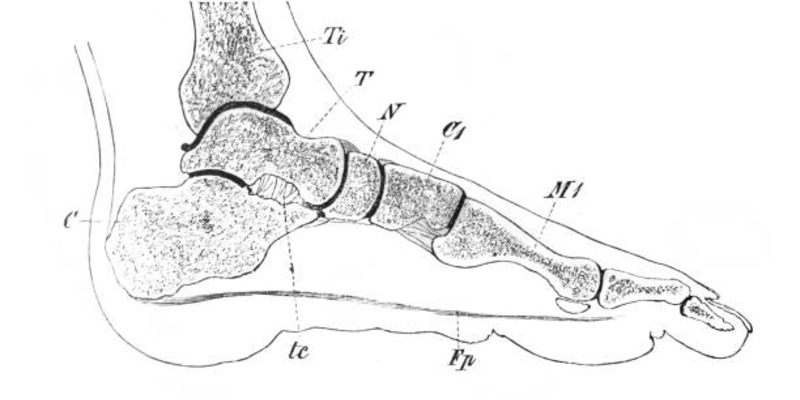Understanding Sciatica: Causes, Symptoms and Treatment Option
Oct 01, 2023 By Madison Evans
Sciatica refers to the pain that radiates along the path of the sciatic nerve, which is the longest nerve in the human body. This nerve starts from the lower back, runs through the buttocks, and extends down the back of each leg. When the sciatic nerve is compressed or irritated, it can lead to the development of sciatica.
Types of Sciatica

There are different types of sciatica, each with its own unique characteristics. These include:
Lumbar Radiculopathy:
Lumbar Radiculopathy, also referred to as a herniated disc, is one of the most common types of sciatica. It occurs when a disc in the lower spine becomes damaged or wears down over time, causing the inner gel-like substance to leak out. This can irritate or compress the nearby nerve roots, including the sciatic nerve, which often results in radiating pain, numbness, and weakness along the affected nerve's path.
Symptoms often intensify with certain movements, like bending over or lifting heavy objects. Treatment options range from physiotherapy and pain management strategies to surgery in more severe cases.
Piriformis Syndrome:
Piriformis Syndrome is another type of sciatica, caused by the piriformis muscle irritating the sciatic nerve. The piriformis muscle, located in the buttock region, assists in hip rotation. When this muscle becomes tight or spasms, it can compress the sciatic nerve leading to symptoms similar to sciatica, known as Piriformis Syndrome.
Pain, numbness, and tingling may be felt in the buttocks and down the leg. This condition can occur due to repetitive strain injuries, prolonged sitting, or direct trauma to the muscle.
Spinal Stenosis:
Spinal Stenosis is a form of sciatica triggered by the narrowing of the spaces within your spine, which can put pressure on the nerves that travel through the spine. This condition often occurs in the lower back and neck. Some people with spinal stenosis may not have symptoms, while others may experience pain, numbness, muscle weakness, and problems with balance, typically in the legs. In severe cases, spinal stenosis can cause difficulty in walking or even paralysis.
Causes of Sciatica
Sciatica can have various causes, including:
- Herniated Disc: When the soft inner material of a disc in the spine leaks out and presses against the sciatic nerve.
- Bone Spurs: Overgrowth of bone on the spine can lead to the compression of the sciatic nerve.
- Spinal Stenosis: The narrowing of the spinal canal can put pressure on the sciatic nerve.
- Piriformis Syndrome: Irritation of the sciatic nerve due to the tightening or spasms of the piriformis muscle.
- Spondylolisthesis: When a vertebra slips forward over another, it can pinch the sciatic nerve.
Symptoms
The most common symptom of sciatica is pain that radiates from the lower back to the buttocks and down the leg. Other symptoms may include:
- Burning or tingling sensation: Numbness or a prickling feeling in the affected leg or foot.
- Muscle weakness: Difficulty in moving the leg or foot.
- Sharp pain: Intense pain that worsens with movement or prolonged sitting or standing.
Treatment Options

Treatment for sciatica depends on the severity of the condition and the underlying cause. Non-surgical treatment options include:
- Pain Medication: Over-the-counter or prescription medications to alleviate pain and reduce inflammation.
- Physical Therapy: Targeted exercises and stretches to improve strength, and flexibility, and reduce nerve compression.
- Hot and Cold Therapy: The application of heat or cold to the affected area to reduce inflammation and alleviate pain.
- Lifestyle Modifications: Implementing changes such as maintaining proper posture, avoiding prolonged sitting, and regular exercise.
In severe cases or when conservative treatments fail to provide relief, surgical intervention may be necessary. Surgical options include:
- Lumbar Microdiscectomy: Removal of the herniated portion of a disc that is compressing the sciatic nerve.
- Laminectomy: Surgical removal of a portion of the vertebra to relieve pressure on the sciatic nerve.
Risk Factors
Several factors can increase the risk of developing sciatica, including:
- Age: Age-related changes in the spine, such as herniated discs or bone spurs, are more common in older individuals.
- Obesity: Excess weight can increase pressure on the spine, leading to sciatica.
- Occupation: Jobs that require heavy lifting, prolonged sitting, or twisting movements can contribute to the development of sciatica.
- Diabetes: This condition can affect nerve function, making individuals more prone to developing sciatica.
Prevention Tips
- Regular Exercise: Engaging in physical activity that strengthens the back and core muscles can help reduce the risk of sciatica.
- Maintaining Good Posture: Proper posture, both while sitting and standing, can help prevent unnecessary strain on the spine.
- Using Proper Lifting Techniques: When lifting heavy objects, it is important to use your legs and not your back to avoid injury.
- Taking Breaks: If your job involves prolonged sitting or standing, taking regular breaks and stretching can help reduce the risk of sciatica.
- Maintaining a Healthy Weight: Excess weight puts additional strain on the spine, increasing the risk of sciatica.
Conclusion
Sciatica can be a challenging condition, but understanding its symptoms, causes, and treatment options can help individuals make informed decisions and seek appropriate medical advice. Remember, if you experience persistent or severe pain, it is important to consult a healthcare professional for a proper diagnosis and personalized treatment plan. By implementing preventive measures and adopting a healthy lifestyle, you can reduce the risk of developing sciatica and enjoy a life free from the limitations of this condition.
-
 Jul 10, 2024
Jul 10, 2024Bothered by Expression Lines? Here Are 10 Effective Tips to Eliminate Them
Discover effective methods to reduce expression lines and maintain youthful skin with these expert skincare tips and techniques.
-
 Oct 21, 2023
Oct 21, 2023Learn about what is trichotillomania, its causes, and its treatment all in one guide. Discover trichotillomania causes.
Everything You Need To Know About Trichotillomania
-
 Jan 21, 2024
Jan 21, 2024Comprehensive Guide to Plantar Fasciitis Treatment Options
Discover effective treatment options for plantar fasciitis, from at-home remedies to medical interventions. Understand the condition and improve your foot health.
-
 Nov 11, 2023
Nov 11, 2023What is cervical cancer?
This comprehensive article provides critical insights into cervical cancer, detailing risk factors, symptoms, prevention methods, and early detection strategies to combat this life-threatening disease.
